


In construction... ![]()
These pages may contain some large images and a few animations. Please be patient while they load...
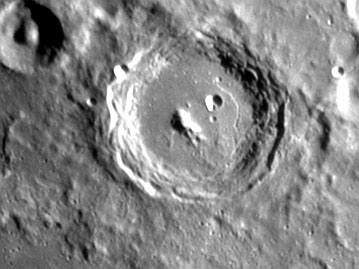

Numerous large craters, like Arzachel (above left) and Copernicus (above right) exhibit terraced walls and central peaks. In some cases the central peak is very pronounced, as occurs in crater Alpetragius (upper-left corner of above left image). Terraced walls result from the partial collapse of the initial, that is transient crater's rim, while the central peaks represent the rebound of the material present beneath the impact's site.
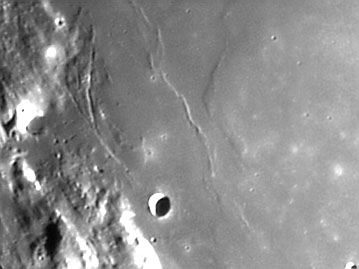

In contrast to large craters, small ones like Sulpicius Gallus (above left) or Linné (above right) are usually bowl-shaped, lacking terraced walls and central peaks.


A number of craters on the Moon, like Posidonius (above left) and Gassendi (above right) exhibit rilles, or clefts, in their floors. These two craters also have another interesting feature in common. They both exhibit their rims interrupted by smaller craters. This type of relationship is a clear indication that the impacts that originated the smaller craters are more recent. Crater superimposition is quite a common event in regions with high crater density, namely in the southern highlands, and deserves observation. For instance, take a look at craters Orontius, Huggins and Nasireddin.
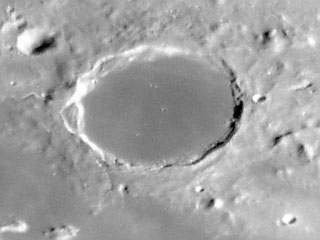
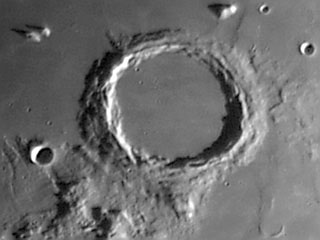
Some lunar craters like Plato (above left) and Archimedes (above right) have very smooth floors only exhibiting a few claterlets.

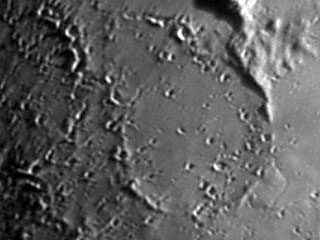
Some craters can be heavily eroded and/or flooded, like the trio Fra Mauro, Bompland and Parry (above left image), and Stadius (above right). Craters such as these are best seen when close to the terminator, that is with low-angle illumination. Other examples that deserve observation are the "ghost-crater" Lamont, and the the completely flooded crater Wargentin.

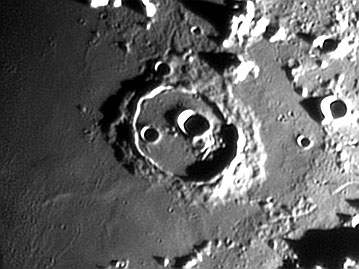

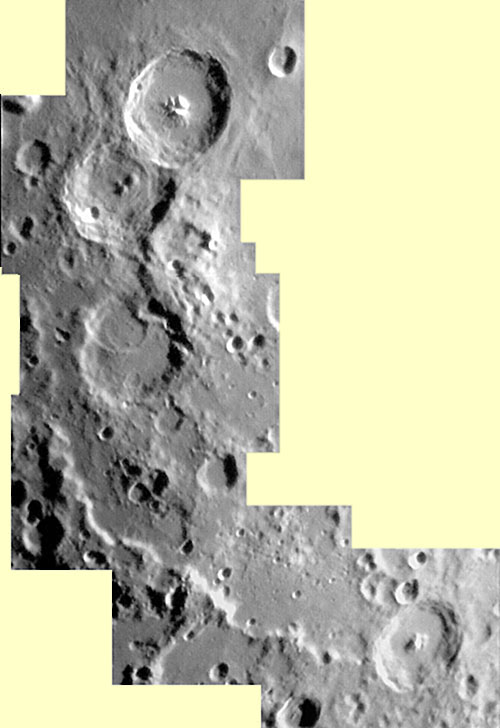
The Moon contains several scarps, or rupes. In the above image Rupes Altai is seen with its slope illuminated, whereas in the image below Rupes Recta is in the shade. Both images were obtained before full-moon. If the opposite had occurred, the lighting effect would be inverse. These two scarps are easily visualized through small telescopes. North of Rupes Altai is a very well known trio of craters, Teophilus, Cyrillus and Catharina, and at its southern end lays cater Piccolomini. West of Rupes Recta is crater Birt and, further west, Rima Birt. Other examples of lunar scarps are Rupes Cauchy, Rupes Kelvin, Rupes Liebig, Rupes Mercator and Rupes Toscanelli.
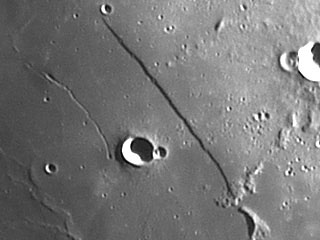
The cyclic changes that occur on the Moon throughout the lunation will be mentioned in the next part of this section.
All Images and Texts on these pages are Copyrighted.
It is strictly forbidden to use them (namely for inclusion in other web pages) without the written authorization of the author
© A.Cidadão (1999)